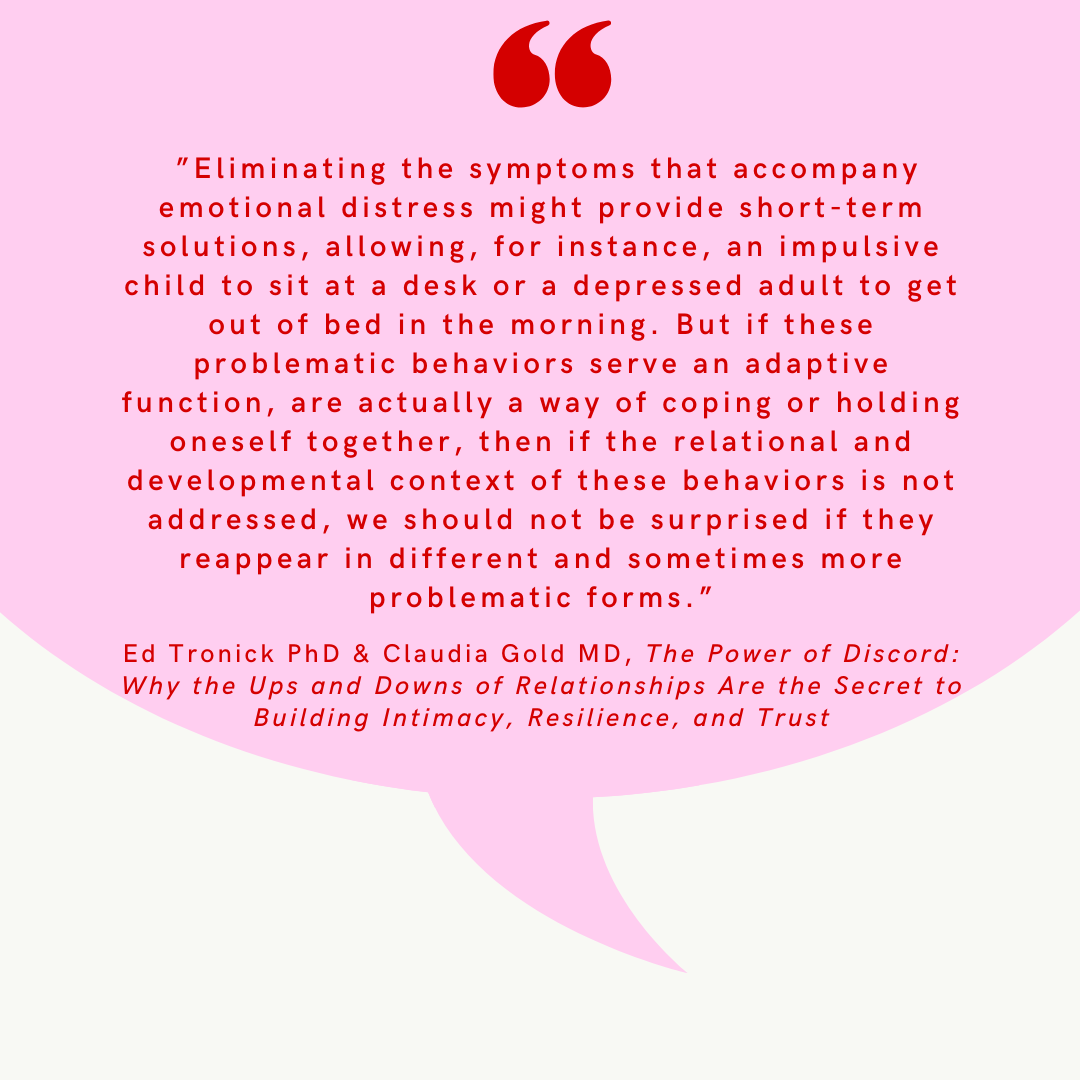Fighting Rhythms as a Relational Path, not Pathology
Instead of racing to the quickest fix to solve distress, to eradicate unruly behavior, to demand a child to focus, or to stop a tantrum at any age, what about listening deeper for the relational and developmental cry for help? Here’s an opportunity for caregivers to get curious, to pause, to stay with the heat that arises, and to invite embodied connection that celebrates the mismatch. If mismatch, sometimes viewed as “opposition” is not relationally met in a trauma-informed way, it’s bound to appear later in another form.
Co-Regulation: Teachers/Caregivers/Helpers as Holding Environment
In a relationship where an understood power differential is present (teacher to student, parent to child, helper to client), a predictable, ongoing environment of co-regulation from the caregiver is necessary for executive functioning and eventual development of self-regulation for the student/child/client. Despite our culture’s overemphasis and premature expectation of self-regulation, developing resilience and a robust Social Engagement System requires a steady dose of co-regulation. The caregiver with the power authority is the “holding environment,” the safe place to land (match), and ideally the safe place to push away (mismatch).
“Fighting Rhythms” as Innately Developmental but Historically Over-Controlled
In addition to Tronick and Gold’s normalization of the “messiness” of mismatch as a path toward deepening relationships, child psychiatrist Judith Kestenberg’s longtime research highlights developmental rhythms based on body-mind, neurobiological and social-experiential influence. Kestenberg named two alternating rhythms: “indulging” and “fighting.” The indulging rhythms offer qualities of connecting and soothing while fighting rhythms offer qualities of differentiating and separateness. These are important to recognize and appreciate during infancy, toddlerhood and particularly during the pubescent period as both sexes have a rise in testosterone that can present as a noticeable increase of the “fighting” rhythms.
If the “fighting” rhythms are shut down, shamed, dismissed, behaviorally “managed or tolerated,” or otherwise interpreted as “problematic”, those movement expressions can become inhibited, possibly masked as the “good child," and possibly re-emerge in maladaptive, harmful or compulsive ways. When the holding environment—the caregiver—becomes triggered by a child’s mismatch or hunger to express their unique curiosity, these expressions of the child’s curiosity are likely to become inhibited. It’s important to refrain from hastily pathologizing behavior, “tossing away” one’s interest, or defining one as “not a fit”, and rather, get more curious about the presentation of the mismatch as possibly one’s implicit cry for connection and even celebration.
Kestenberg’s fighting rhythms are developmental and relational. They are not a result of trauma. When these movement expressions become inhibited, they are accompanied with the traumatic fight or flight response. The child desperately questions, “Can anyone hold my deepest hunger to be known?”
Trauma-informed Healing Approaches for Deep Nourishment
Many trauma-informed healing approaches involve “discharging” these inhibited moves and processing these dissociated relational needs (Waking the Tiger by Peter Levine and The Body Keeps the Score by Bessel van der Kolk). In an effort to appreciate both of these indulging and fighting developmental rhythms in a consciously embodied way, Chi for Two® offers polyvagal-informed, relational practices to help re-pattern nervous system functioning. This unique multigenerational trauma healing method not only helps to awaken energy and a fulfilling sense of embodiment. It celebrates one’s unique potential to shine in a deeply nourished way.
Interested in learning more about the body-mind connection as developmental and relational? Interested in the Chi for Two® trauma healing method within a psychotherapeutic or embodiment coaching approach? M-Bodied Therapy and Coaching offers individuals, couples, family and parent support in addition to group workshops.


